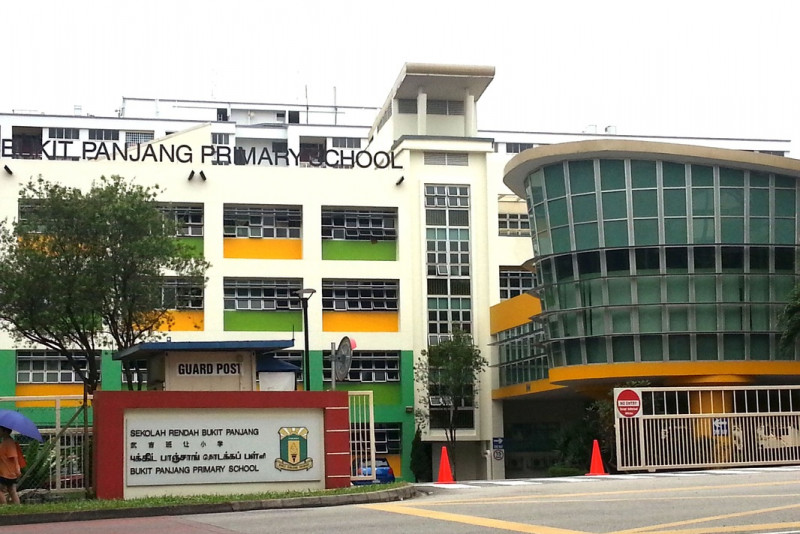As a country with a British Commonwealth education system, Singapore’s school system and university system are drastically different from quite some other Asian countries, especially China. So what exactly is Singapore’s education system like?

Singapore Government Primary Schools
Primary education in Singapore is a six-year, half-day system starting from the age of six. These six years of primary education are divided into two phases. The first phase is the foundation stage (Primary 1 to Primary 4), and the second phase is the orientation stage (Primary 5 and Primary 6). The curriculum in the foundation stage is uniform, focusing on developing students’ basic literacy and computer skills, with core subjects including English, Mother Tongue, and Mathematics. Additionally, there are art, craft, music, and physical education. At the end of Primary 4, students take orientation exams in English, Mother Tongue, and Mathematics to enter the primary orientation stage. In this stage, the difficulty level of teaching English, Mother Tongue, and Mathematics is set according to the students’ abilities. This streaming system allows students to learn at their own pace and fully develop their potential. Graduates of Grade 6 need to take the Primary School Leaving Examination (PSLE), with subjects including English, Mother Tongue, Mathematics, and Science.

Singapore Government Secondary Schools
Students are streamed again based on the PSLE taken at the end of Primary 6. The top 5% of students enter the Integrated Programme (4 years of secondary school + 2 years of junior college) and take the A-Level exam at the end of Secondary 6. 50% of students enter the 4-year express stream in secondary school and take the O-Level exam at the end of Secondary 4. 20%-25% of students enter the 5-year normal (academic) stream, taking the N-Level exam at the end of Secondary 4, and only those who pass can proceed to Secondary 5 to take the O-Level exam. Some students receive vocational education or start working at this stage. 15%-20% of students enter the 5-year normal (technical) stream, taking the N-Level exam at the end of Secondary 4. After passing the N-Level exam, they study for one more year to take the O-Level exam. Most students do not continue to the fifth year after the N-Level exam and directly enter polytechnics. All students who take the O-Level exam, regardless of the stage, choose to further their studies at junior colleges (Singapore does not have high schools as defined in our country, only junior colleges with a 2-year education, equivalent to the high school stage in our country), polytechnics, the Institute of Technical Education, or other institutions based on their O-Level results and interests.
However, the system of streaming fast and slow classes in secondary schools is about to end, and a subject-based banding comprehensive plan will be adopted instead; the O-Level and N-Level will also be integrated into a unified national exam. Some schools have started piloting the subject-based banding comprehensive plan this year and will expand the plan to all secondary schools within five years to help students discover their potential.
If international students want to attend Singapore’s government primary and secondary schools, they need to take the AEIS or S-AEIS exams organized by the government. It is important to note that the grade levels for AEIS registration are Primary 2 to Primary 5 and Secondary 1 to Secondary 3, while Primary 6 and Secondary 4 are not allowed for mid-term entry. The grade levels for S-AEIS registration are Primary 2 to Primary 4 and Secondary 1 to Secondary 2. Compared to AEIS, S-AEIS does not include Primary 5 and Secondary 3 because these two grades are not allowed for mid-term entry. If students do not want to take the AEIS or S-AEIS exams or if the exam results are not ideal, they can choose to attend private primary and secondary schools or international schools in Singapore. Generally, private primary and secondary schools have more flexible curriculum settings, with some schools adopting the same curriculum as government primary and secondary schools, such as San Yu Adventist School; others offer a variety of courses to provide different academic pathways for students with different needs, such as St. Francis Methodist School. The mainstream curriculum in international schools is the IB program, and some schools also offer corresponding national education courses, such as AP or IGCSE. The IB program incorporates the advantages of many contemporary mainstream curriculum systems, emphasizing the development of students’ personalities and abilities, and endowing students with interdisciplinary thinking skills, focusing on the comprehensiveness and applicability of knowledge. Moreover, Singapore’s IB scores are the highest in the Asia-Pacific region, and students using the IB certificate can directly apply to more than 4,000 universities worldwide. However, because international schools provide students with the highest quality education services, their operating costs are also very high, and naturally, the tuition fees are relatively expensive.

Higher Education in Singapore
Singapore has five polytechnics: Republic Polytechnic, Nanyang Polytechnic, Temasek Polytechnic, Ngee Ann Polytechnic, and Singapore Polytechnic. The education system is three years long, and graduates receive a Diploma. The professional knowledge learned in polytechnics is more targeted, practical, and focused on technology, allowing graduates to directly enter the workforce. Of course, they can also choose to continue their studies at universities.
Singapore has six public universities: National University of Singapore, Nanyang Technological University, Singapore Management University, Singapore University of Technology and Design, Singapore Institute of Technology, and Singapore University of Social Sciences. Public universities offer undergraduate and graduate courses and are internationally recognized. Moreover, the National University of Singapore and Nanyang Technological University are among the world’s top universities, with considerable influence.
Singapore also has many private universities, many of which offer courses in partnership with famous institutions in the UK, USA, and other countries. After completing the courses and passing the exams, students can obtain corresponding diplomas, which are internationally recognized. After graduation, students can choose to work or continue their studies in the UK, USA, and other countries.
